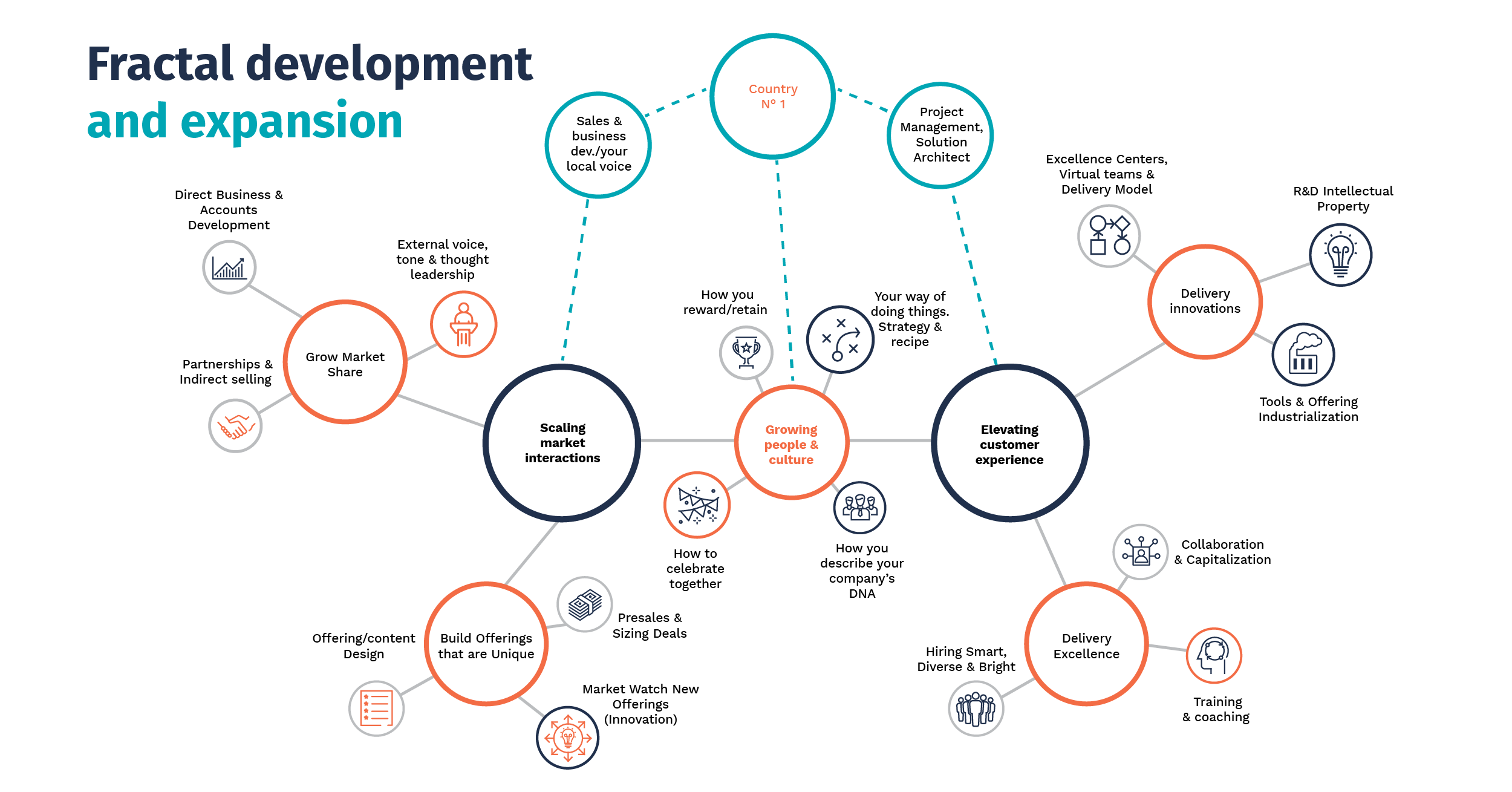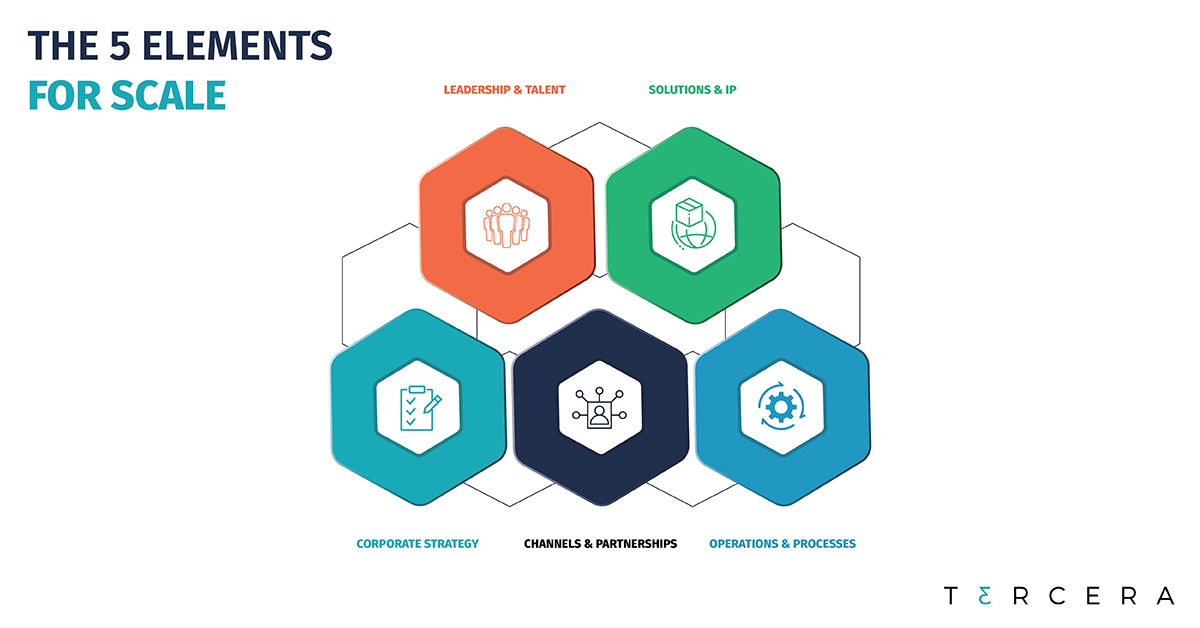When I started my internship with Tercera earlier this summer, I knew there would be a lot to learn. As a junior at the University of Illinois’ Gies College of Business studying for a BS in Information Systems & Management (and the daughter of a small business owner), I felt I had a pretty good foundation for how businesses work. But I also knew there is no substitute for real-world experience.
During my internship, as I was researching all things cloud, tech and consulting, I noticed that quite a few firms in this space were B Corps Certified. I was familiar with the term. Patagonia had introduced the term to me a few years ago, but I didn’t even think about why a services firm would want to become certified. A certification aimed at verifying social and environmental performance seemed far more suited for product and consumer goods companies like Ben & Jerry’s than people-based firms (many of which have remote workforces). Yet there they were, services firms highlighting their B Corps certification on websites, social media sites and careers pages, and I was intrigued.
Over the last few weeks, I was fortunate enough to interview a few representatives from B-corp certified services firms who explained the process, benefits, and why they were attracted enough to go through the lengthy endeavor. An endeavor that one of these individuals described as their “North Star” for building a purpose-driven organization and a big differentiator when it comes to recruiting.
#Bethechange
If you’re unfamiliar with the term B Corps, here’s what you’ll find on its website: “Certified B Corporations are businesses that meet the highest standards of verified social and environmental performance, public transparency, and legal accountability to balance profit and purpose. B Corps are accelerating a global culture shift to redefine success in business and build a more inclusive and sustainable economy”.
Started by three ex-private equity professionals, B Corps was founded on the idea that today’s issues cannot be solved by government and nonprofits alone. The Wall Street alumni reflected on the work they were doing in respect to the conditions of the world around them and decided they wanted to use business as a way to enact positive change.
The certification
The process begins with a tool, the B Impact Assessment, which companies use to measure their existing impact on workers, their community, environment and customers. The questions are extensive and require time and effort to sort through — the whole process can take up to a year and a half, if completed as a background gig. Questions are given point values and topics range from ‘how much PTO do you allow employees’ to ‘how is your company cutting down on energy usage’ to ‘how diverse is your leadership team’.
You need to reach an 80 point minimum threshold to pass, and the process then continues with a B Corps representative checking records and documentation that prove you answered the questions accurately and honestly. I will note that there are some questions regarding supply chain and sourcing that services companies will automatically miss out on, but there are plenty of other areas in which your company can make up for lost points. Lastly, the certification does require yearly dues and upkeep to maintain, which is why it’s nice to have a designated person or team to manage the project.
Is it beneficial?
So, why have 3,500 companies worldwide already taken the pledge to abide by these rigorous, higher ethical standards of business? Well, let’s look at the stats:
- A 2021 Gallup poll found that 81% of American respondents say a business’ impact on its local community matters, while another poll indicated 69% of American workers say a company’s environmental record is a factor when taking a job.
- A 2018 Accenture study found that 62% of customers want companies to take a stand on current and broadly relevant issues like sustainability, transparency or fair employment practices.
- A 2017 American Express study found that 68% of Millennials want to make a positive difference in the world through their careers, and 81% said a successful business needs to have a genuine purpose.
If the stats above are any indication for how workforce expectations and customer demands are trending, the success of any company – product or service – will depend not just on financial performance but also how they act on environmental, social and governance (ESG) initiatives. As growing trends of conscious consumerism boom and employees demand that the companies they choose to work with take action, my hope and hypothesis is that this new standard will become the norm in years to come.
But does it apply to services?
My preconception that B Corps was reserved strictly for product companies like Patagonia that need to appeal to eco-conscious consumers was eradicated when I came to understand that professional services are seeing it as a way to differentiate, attract talent, and become more purpose-driven.
Jolene Chan from Traction on Demand, a Salesforce consultancy with more than 1000 employees across the globe, explained how the certification process and the metrics put in place by B Corps have been a “North Star” in guiding decision making. Jolene is Traction’s new Chief Impact Officer — a role you’ll likely see pop up more and more now that companies are bringing these issues up to the executive and board level.
Choosing to become B certified, or implementing other consciously-based business processes, seems especially important for people-driven companies where recruiting and team engagement are so important. Simone Marin from Trineo, another cloud services firm specializing in the Salesforce ecosystem said the B-corp process has helped shape the way in which the company makes decisions. Beyond the initial certification process, it has also been able to translate the questions into a way to monitor progress and continuously improve business processes.
Trineo isn’t alone. A number of services companies have highlighted talent acquisition and retention as a benefit. As stated on the B Corps site, Tiffany Jana of TMI Consulting, said her biggest surprise after becoming certified was “the social capital B Corp community membership gave me with millenials… I no longer search for high-potential staff; they now come to me”.
Simone emphasized this point as well, describing how the majority of Trineo’s potential new employees expressed that their initial draw to the company was the certification, which they’re also hoping to use in the future to attract clients who share similar values.
With the labor shortage happening now (and expected to continue) in professional services, companies will need a competitive edge in order to attract millennials and future generation workforces.
My humble opinion
Coming from someone who’s about to join the workforce and has spoken with many peers on the issue, I believe the majority of us will be looking to join companies that share values like those highlighted in the B Corps process. We understand how pivotal it is for our shared future to address environmental, social and community issues, and we want to work with businesses and business leaders who also want to ‘be the change’.
The very first class that business students are required to take at my school is BUS 101: Professional Responsibility and Business. It’s here that we were introduced to the framework developed by Michael Porter and Mark Kramer in 2011 known as shared value, or value that accounts for employees, supply chains, society, AND the environment; not just stakeholders.
The fact of the matter is that companies now have an opportunity to hold themselves accountable, to take responsibility, and to become a force for positive change in a world that so desperately needs it. My generation will demand these practices be a part of the business model, and in some cases, will even become the “Why” for going into business in the first place. That was my reason!
If you want to attract the best and brightest of the next gen workforce, and keep up with today’s ever-demanding expectations, I would consider checking out the B Corps certification to see if it’s an attainable goal for your company. If not, there are still plenty of ways to make positive change; B Corp just gives you the verified do-good stamp of approval.
If you do decide to go down this path, my last piece of advice would be to act fast! B Corps is currently experiencing an overwhelming surge of interest, which, from my perspective, is extremely hopeful and encouraging, and from a business standpoint may just be the catalyst needed to get going on this grand, do-good venture.



